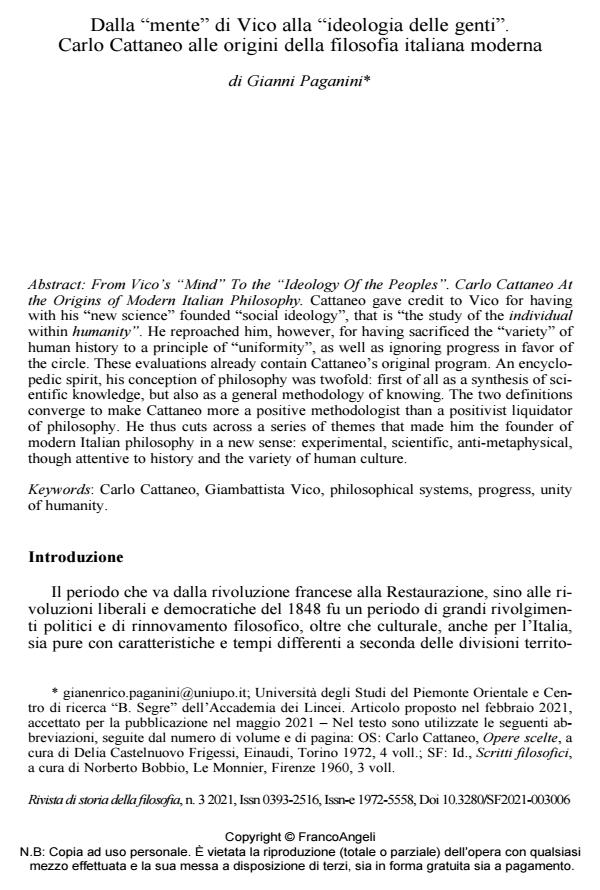Dalla "mente" di Vico alla "ideologia delle genti". Carlo Cattaneo alle origini della filosofia italiana moderna
Titolo Rivista RIVISTA DI STORIA DELLA FILOSOFIA
Autori/Curatori Gianni Paganini
Anno di pubblicazione 2021 Fascicolo 2021/3
Lingua Italiano Numero pagine 16 P. 479-489 Dimensione file 303 KB
DOI 10.3280/SF2021-003006
Il DOI è il codice a barre della proprietà intellettuale: per saperne di più
clicca qui
Qui sotto puoi vedere in anteprima la prima pagina di questo articolo.
Se questo articolo ti interessa, lo puoi acquistare (e scaricare in formato pdf) seguendo le facili indicazioni per acquistare il download credit. Acquista Download Credits per scaricare questo Articolo in formato PDF

FrancoAngeli è membro della Publishers International Linking Association, Inc (PILA)associazione indipendente e non profit per facilitare (attraverso i servizi tecnologici implementati da CrossRef.org) l’accesso degli studiosi ai contenuti digitali nelle pubblicazioni professionali e scientifiche
Cattaneo gave credit to Vico for having with his "new science" founded "social ideology", that is "the study of the individual within humanity". He reproached him, however, for having sacrificed the "variety" of human history to a principle of "uniformity", as well as ignoring progress in favor of the circle. These evaluations already contain Cattaneo’s original program. An encyclopedic spirit, his conception of philosophy was twofold: first of all as a synthesis of scientific knowledge, but also as a general methodology of knowing. The two definitions converge to make Cattaneo more a positive methodologist than a positivist liquidator of philosophy. He thus cuts across a series of themes that made him the founder of modern Italian philosophy in a new sense: experimental, scientific, anti-metaphysical, though attentive to history and the variety of human culture.
Parole chiave:Carlo Cattaneo, Giambattista Vico, philosophical systems, progress, unity of humanity.
Gianni Paganini, Dalla "mente" di Vico alla "ideologia delle genti". Carlo Cattaneo alle origini della filosofia italiana moderna in "RIVISTA DI STORIA DELLA FILOSOFIA" 3/2021, pp 479-489, DOI: 10.3280/SF2021-003006